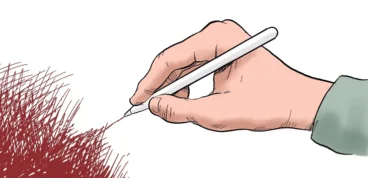The world’s third richest man, who could afford to keep his newspaper fully staffed with just a fraction of a per cent of his wealth, has decided that altruism and social conscience is not for him.
Traditionally it was advertising and circulation that created profits for newspapers. As both of those have fallen drastically over the past decades newspapers are scrambling to stay above water, “many are turning to philanthropy as a safety net.”
From the Dorothy A. Johnson Center early in 2023:
The Johnson Center first reported on growth in the nonprofit media landscape in 2019’s 11 Trends in Philanthropy report. That piece, “Nonprofit Media is Experiencing a Growth Spurt — So is Philanthropy’s Response” (Martin, 2019), primarily focused on the rapid proliferation of start-up nonprofit news outlets and the response from individual philanthropists (small-dollar donors and billionaires alike).
Few have taken the dramatic step of giving up their for-profit status completely, although this has happened. In May 2019, The Salt Lake Tribune (established in 1871) became the first legacy paper in the United States to announce its intention to fully convert from a corporation to a 501(c)(3) nonprofit (Mele, 2019).
The Salt Lake Tribune’s non-traditional operating strategy includes some traditional customs, like keeping Pat Bagley on staff as an editorial cartoonist.

inewsource’s recent hiring of Steve Breen, John Cole at NC Newsline, and Mississippi Today’s Marshall Ramsey are a few of editorial cartoonists working for nonprofit newsrooms, not hard copy newspapers mentioned in the article.
Other cartoonists are quoted in the article explaining traditional newspapers wariness of editorial cartoons:
“An editorial cartoon that doesn’t have an opinion is like running a Hallmark greeting card on the editorial page,” political cartoonist Michael de Adder wrote after losing a newspaper job in 2019. “And these days, more and more newspapers want this.”
Newspapers have cut the number of opinion pages they print and increasingly skip political endorsements, too, but editorial cartoons have been treated like especially soft targets.
“It is their clarity and pointedness, the sharpness of their satire, that make [cartoons] such powerful vehicles for expressing opinion,” Kevin Siers, former president of Association of American Editorial Cartoonists, has said. “There is no ‘on the other hand’ in an editorial cartoon. This power, understandably, makes editors nervous, but to completely discontinue their use is letting anxiety slide into cowardice.”

